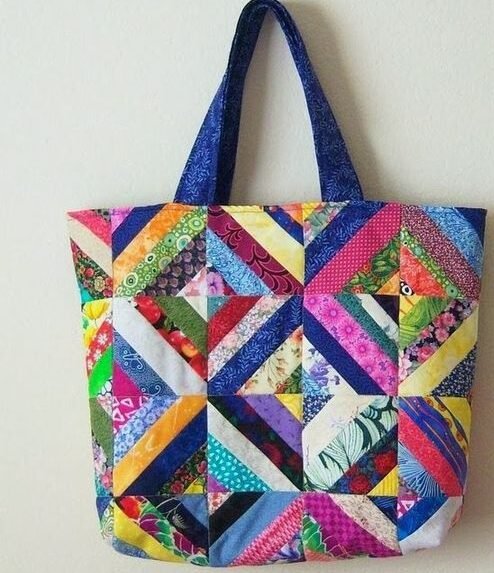Quilting is an art form that has been cherished for generations, evolving from a practical necessity to a vibrant expression of creativity.
Among the myriad styles and techniques within quilting, 3D quilts stand out as a particularly captivating and innovative approach. These quilts create the illusion of depth and dimensionality, adding an extra layer of intrigue to the traditional craft.
In this article, we will explore the world of 3D quilts, delve into their techniques, and provide a free pattern for enthusiasts to try their hand at this mesmerizing form of textile art.

Understanding 3D Quilts
What sets 3D quilts apart from their conventional counterparts is their ability to simulate depth, texture, and movement. Rather than laying flat, these quilts incorporate elements that pop out, creating a visual illusion of three-dimensional space.
This effect can be achieved through various techniques, including fabric manipulation, strategic piecing, and creative use of color and shading.
One common technique used in 3D quilts is trapunto, a quilting method that involves stuffing certain areas of the quilt to create raised surfaces.
By strategically adding batting or filler material to specific quilted areas, such as motifs or borders, quilters can achieve a sculptural effect that enhances the overall dimensionality of the piece.
Another approach to creating 3D quilts involves the use of folded fabric or origami techniques.
By folding and layering fabric in intricate patterns, quilters can add depth and texture to their quilts, resulting in visually stunning designs that seem to leap off the surface.

Tips for Creating 3D Quilts
While 3D quilts offer endless possibilities for creativity, they also present unique challenges that quilters should be aware of. Here are some tips to help you successfully embark on your 3D quilting journey:
- Experiment with different fabrics: The choice of fabric plays a crucial role in the success of a 3D quilt.Consider using fabrics with varying textures and weights to enhance the dimensional effect of your quilt. Additionally, experimenting with prints and patterns can add visual interest and depth to your design.
- Pay attention to shading and color placement: Strategic use of shading and color can greatly enhance the three-dimensional illusion of your quilt.Consider how light and shadow interact with your design, and experiment with different color placements to create depth and contrast.
- Practice precision in piecing and construction: Achieving crisp, clean lines and precise piecing is essential when creating 3D quilts.Take your time to ensure accurate measurements and seam allowances, and pay attention to detail throughout the construction process to achieve professional-looking results.
- Embrace experimentation and creativity: One of the most exciting aspects of 3D quilting is the opportunity to experiment and push the boundaries of traditional quilting techniques.Don’t be afraid to try new things, whether it’s incorporating unconventional materials or experimenting with innovative construction methods. Let your creativity guide you as you explore the possibilities of 3D quilting.


Free Pattern: 3D Pinwheel Quilt
To help you get started on your 3D quilting journey, we’re providing a free pattern for a stunning 3D pinwheel quilt. This pattern incorporates folded fabric techniques to create a mesmerizing dimensional effect that will impress quilters of all skill levels.
Materials Needed:
- Assorted quilting cottons in coordinating colors and prints
- Batting
- Thread
- Scissors
- Rotary cutter and cutting mat
- Sewing machine
- Iron and ironing board

Instructions:
- Begin by selecting your fabrics and cutting them into squares of equal size. You will need an equal number of squares for each color you plan to use in your pinwheel design.
- Fold each fabric square diagonally to create a triangle, then fold the triangle in half again to create a smaller triangle. Press the folds with an iron to create crisp creases.
- Arrange your folded fabric triangles into pinwheel shapes, alternating colors to create contrast and visual interest. Experiment with different arrangements until you find a design you’re happy with.

- Once you’ve finalized your pinwheel design, carefully sew the folded fabric triangles together using a quarter-inch seam allowance. Press the seams open to reduce bulk and ensure smooth, flat seams.
- Layer your completed pinwheel blocks with batting and backing fabric, then quilt as desired to secure the layers together. Consider adding additional quilting to enhance the dimensional effect of your design.
- Trim the excess batting and backing fabric from the edges of your quilt, then bind the edges to finish the quilt.
- Finally, stand back and admire your stunning 3D pinwheel quilt! Display it proudly in your home or give it as a thoughtful handmade gift to a fellow quilting enthusiast.

3D quilts offer a unique opportunity for quilters to explore the intersection of art and craft, combining traditional quilting techniques with innovative design elements to create visually striking works of textile art.
Whether you’re a seasoned quilter looking to expand your skills or a novice eager to explore new creative avenues, 3D quilting provides endless possibilities for experimentation and expression. So gather your materials, unleash your creativity, and dive into the fascinating world of 3D quilts today!



